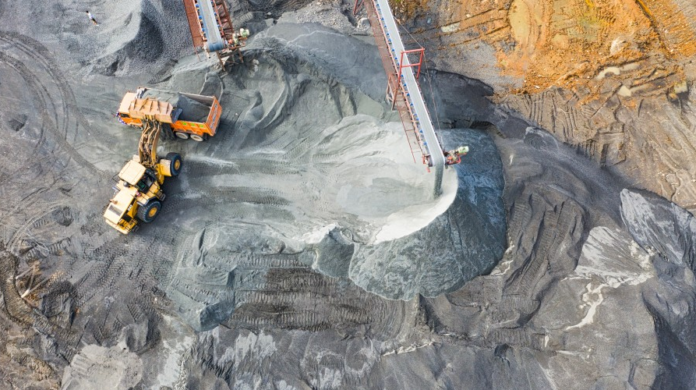By Fakhar-e-Alam
PESHAWAR, Feb 23 (APP): With deposits ranging from gold and copper to coal and salt, Pakistan has vast deposits of minerals offering opportunities to stimulate its economy and progress of people, once this area if fully focused to exploit this potential.
Key regions including Balochistan, Khyber Pakhtunkhwa and Sindh hold the promise of significant economic prosperity through mineral exploration as Balochistan’s Reko Diq copper and gold project, with reserves estimated at over $260 billion, is a prime example of the wealth lying beneath the surface.
Similarly, the Thar coalfields—one of the largest untapped coal reserves globally—represent an opportunity to meet domestic energy needs and cater to growing export demands besides gems, granite and marble of Khyber Pakhtunkhwa.
These deposits were there since centuries before they came to fore after mining and drilling in different areas of these provinces just a couple of decades back. But, even after knowing about these deposits, the country is still in planning, tendering or bidding phase in many cases.
In some instances like Reko Diq different hiccups and litigation between the local authorities as well as the mining company, delayed the mining process even when it was direly needed in view of prevailing economic challenges.
So to say, despite being a home to precious minerals worth trillions of dollars, respective governments failed to fully unlock these natural treasures. Unfortunately, our mining industry remained largely underdeveloped due to infrastructure challenges, inadequate investment and complicated regulatory mechanisms.
A crucial aspect of this revitalization is China-Pakistan Economic Corridor (CPEC) that seeks to enhance infrastructure in resource-rich areas, improving access to mineral deposits and facilitating mining operations.
Besides China, countries like Saudi Arabia, Kuwait and many others are mulling investment in this sector and these overtures would not only benefit the exploring companies but also help improve economic conditions indigenously.
“The government’s move to modernize the mining sector by offering tax incentives and streamlining regulations is expected to draw both local and foreign investors,” remarked an economist Prof Dr Naeemur Rehman Khattak.
He said Pakistan’s revised mineral exploration laws aim to encourage wider participation, creating opportunities for both large-scale corporations and smaller mining ventures.
“Projects like Reko Diq and Thar coal would not only bolster exports, particularly of coal and precious metals but also generate thousands of jobs in sectors like mining, infrastructure development and related industries like cement and steel production,” Prof. Naeem said.
Beyond traditional mining, he claimed that Pakistan’s gemstone industry holds export potential estimated at US$ 32 billion.
Recent efforts to attract foreign investment and the government’s focus on revitalizing the sector, however, signaled a shift towards realizing the full potential of these resources and consistency of policies in these sectors are hoped to bring about positive changes.
“Besides precious minerals, our marble, granite and gems industry also offer magnanimous profit opportunities,” stated Faraz Ahmed, a marble miner from Peshawar. “Profitability in marble industry is an easy going task as an investor with basic know-how and Rs three million investment could earn Rs 10 million annually.”
But, he emphasized use of modern techniques and machinery to fully benefit from this sector as there is bulk demand of marble being explored from Mohmand, Swat and Buner districts, within the country and abroad. “At present, many miners rely on outdated equipment and unskilled labor leading to significant resource waste. If we shift to modern techniques from traditional methods of exploration, the dividend would be much more.”
Being Khyber Pakhtunkhwa specific, the province has vast deposits of minerals including 14 trillion tons of marble, limestone, dolomite and gemstones and according to the KP Board of Investment and Trade (KP-BIT), the province’s marble production has been increasing steadily, although export numbers still lag behind the true potential.
“We have introduced a Mining Cadastre Portal to improve transparency and easing the investment process,” informed Junaid Khan, Director General of Mines and Minerals Department.
“Mapping and exploration of mineral sites in regions like Chitral, Orakzai and Kurram is underway with the help of Geological Survey of Pakistan (GSP),” he said. “The government is also working to establish a gemstone laboratory to improve mineral testing process with the help of modern equipment.”
The province has ambitious plans like exploring lithium in Chitral and rare metallic minerals in Orakzai besides improvements in mining safety standards. Besides creation of new industrial clusters for mineral extraction, the government is also constructing Mohmand Marble City on 350 acres and similar projects have been planned for Buner. KP’s growing marble and mining sectors are further supported by Rashakai and Nowshera Special Economic Zones (SEZs) where portions of land are allocated for marble and mining units.
Since the country is in dire need of revenue generation and foreign exchange earning to break the debt shackles, investment in minerals and mining sectors would be of great importance to fully tap this potential, accelerate economic growth and reduce dependence on foreign aid.
Now, with the right policies and investments, Pakistan’s mineral wealth can serve as a cornerstone for its future economic stability and improve the living conditions of its people.

